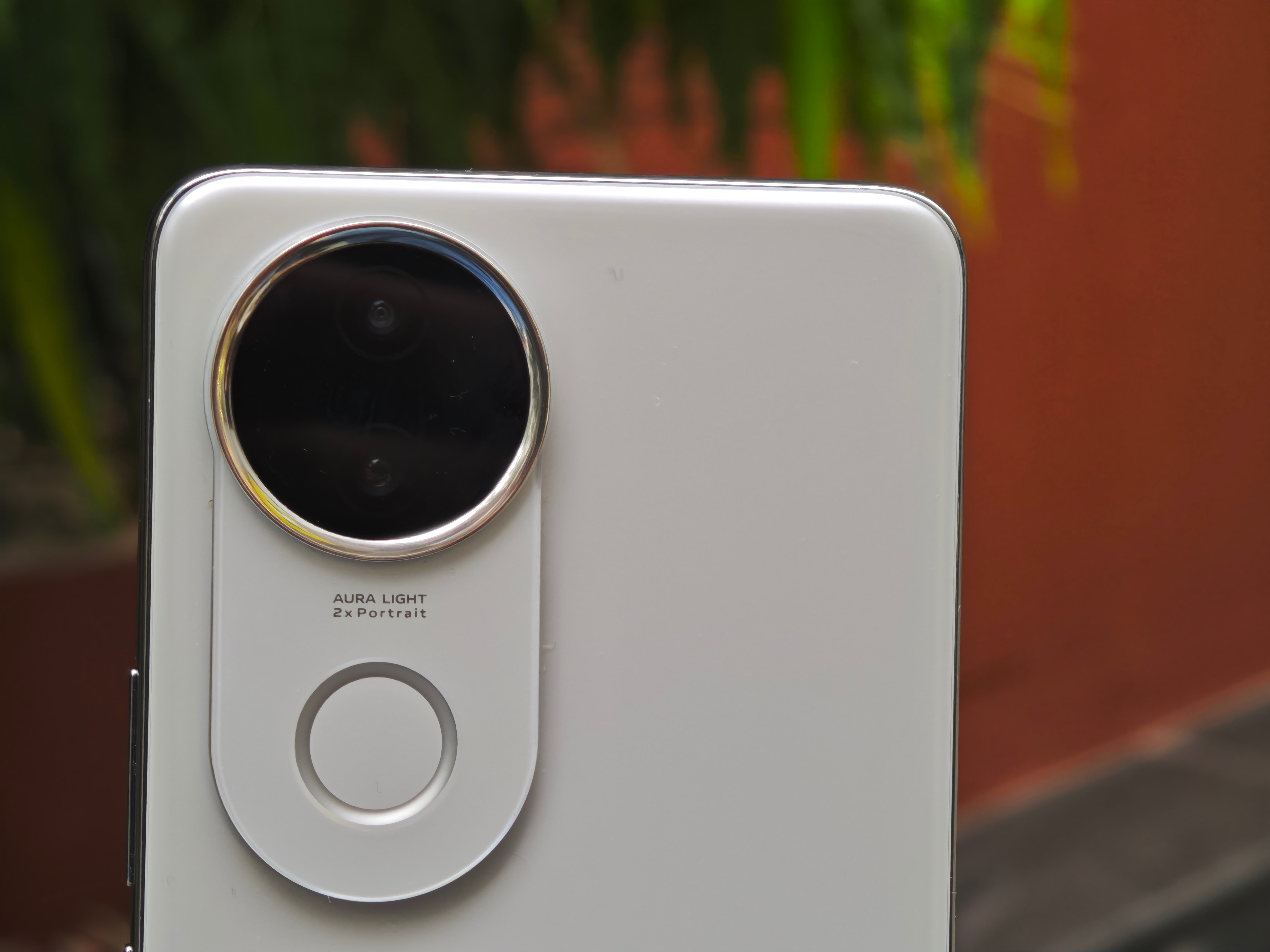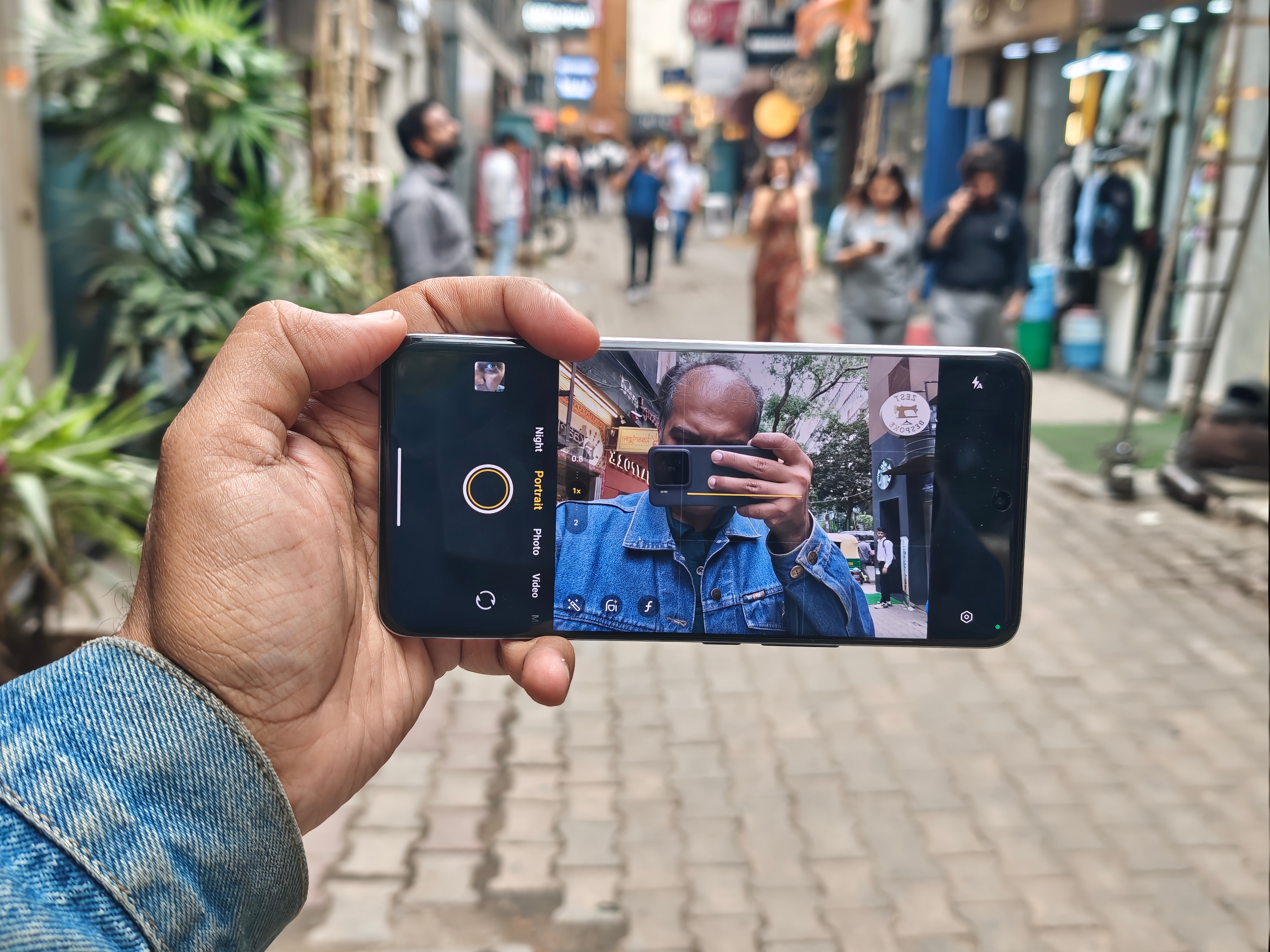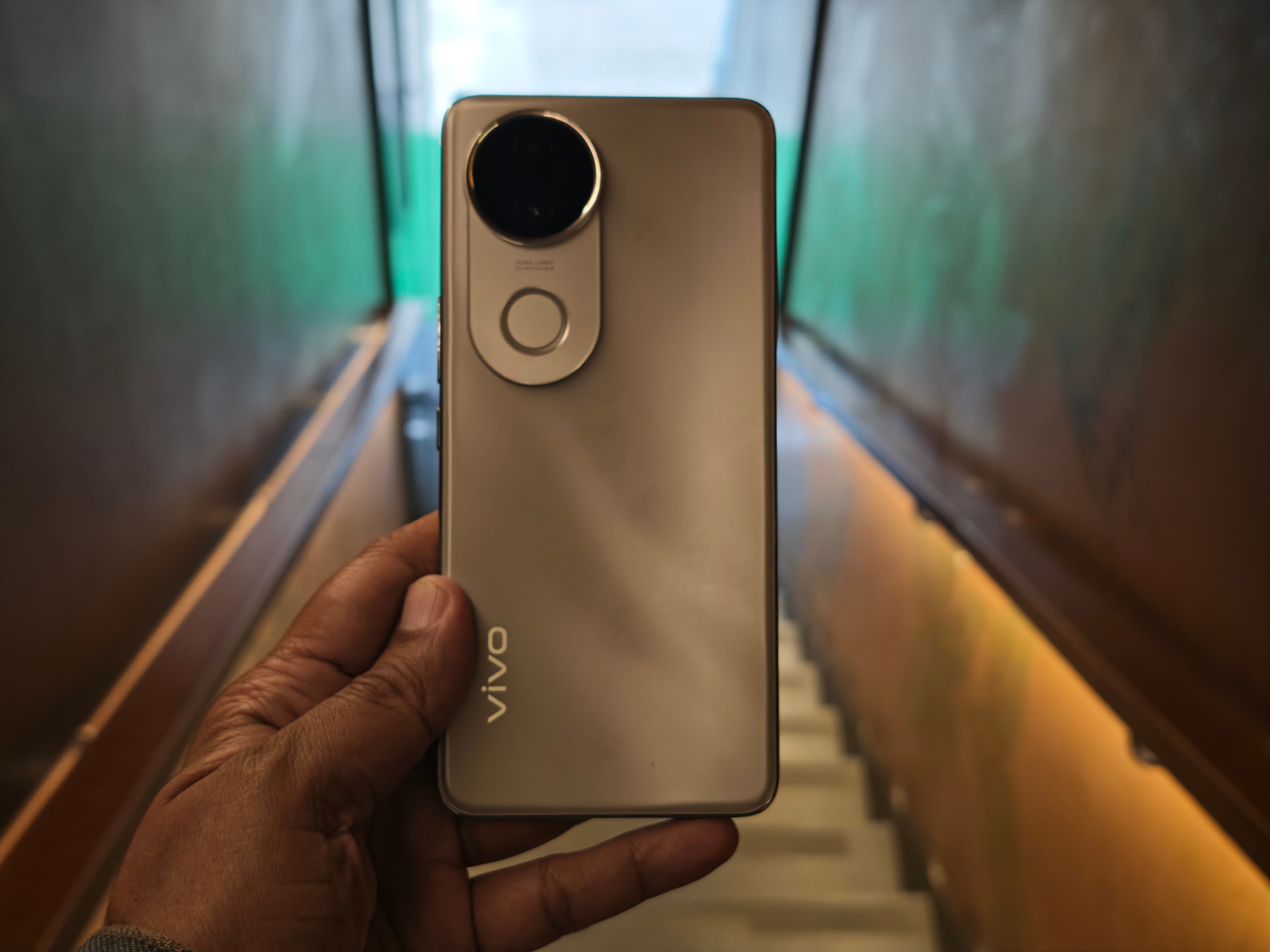Vivo V50e Review: The V40e's Kumbh Mela Twin With Killer Selfies & Sleek Vibes — But Is It Enough?
Vivo V50e Review: Just like its predecessor, the Vivo V50e comes with very good front and rear cameras, in an attractive design. But while it is a smooth operator with sleek looks, it faces some very stiff competition.
Vivo V50e Review: Quick Pointers
What we love:
- Sleek design
- Good main and selfie cameras
- Excellent battery life
- IP68/69 dust and water resistance
What we don’t:
- Mediocre ultrawide camera
- Old processor
- Inferior specs as compared to the competition
- Very similar to the V40e
Similar Looks, Similar Specs… Is This The V40e’s Lost-In-Kumbh Mela Twin?

The Vivo V50e sticks largely to its best-selling predecessor in terms of both design and specs. So much so that the two are difficult to tell apart, unless you remember the colours. The Vivo V50e comes in a brilliant Sapphire Blue (which seems like water flowing across its back) and a more plain Pearl White, as compared to the Royal Bronze and Mint Green of the V40e. We have a soft corner for the Royal Bronze, but take it from us - the Sapphire Blue of the V50e is guaranteed to turn heads, and even the Pearl White is quietly elegant.
The front is again a 6.77-inch AMOLED display with 2392 x 1080 resolution (FHD+) and 120 Hz refresh rate, although it seems brighter than its predecessor. There is a subtle change in that the display is a quad curved one, rather than a curved one as on the V40e, giving the display a slightly flatter look.
The back slopes towards its sides, which are also curved -no fashionably straight sides on this phone. As on the Vivo V40e, the V50e also comes with a pill-shaped camera unit, with two circles within it, one containing two cameras and the other being the Aura flash, which is slightly larger than the one in the Vivo V40e. Even the cameras are similar - a 50 megapixel Sony IMX882 main sensor with OIS with an 8 megapixel ultra wide, and a 50 megapixel selfie camera with autofocus, although this time the selfie camera supports 4K video (the V40e only supports FHD).
The processor driving the phone is again a Dimensity 7300, and you get RAM and storage variants of 8 GB/ 128 GB and 8 GB/ 256 GB, with the RAM being LPDDR4X and the storage UFS 2.2 (both being adequate rather than top of the line).
The battery is slightly bigger - 5600 mAh as compared to 5500 mAh - and it charges faster too (90W as compared to 80W). Also on board are stereo speakers, and as with all Vivo phones, the Vivo V50e one too runs on FunTouch OS on top of Android, Android 15 in this case.
At 163.2 mm tall, the V50e is not a small phone, but it is impressively slim at 7.6 mm and at 186 grams, it is relatively light for its size. The front comes with Diamond Shield Glass and although the frame and back are carbonate, the phone looks sleek, and thanks to an IP68/69 rating (up from IP64 of the V40e), it will easily survive a fall in the water. All said and done, the Vivo V50e looks good but gives off very strong V40e vibes - the phones are like twins separated at a Kumbh Mela, distinguished mainly by colour!
A Smooth Operator With Super Cameras

In terms of performance, the Vivo V50e is a classic Vivo mid-segment. The Dimensity 7300 processor is a solid mid-segment performer, and will sail through most routine tasks without a problem, and can even let you play Genshin Impact and Call of Duty, with a few graphics tweaks. The display and stereo speakers are a good combination for viewing content and for browsing the Web.
FunTouch OS is a little crowded and has its share of bloatware, but wit orks smoothly, and the phone comes with an assurance of three Android updates and four years of security updates. There are plenty of AI tools here too, including Gemini, auto transcription and the like, and the phone handles them reasonably well (top-notch AI performance remains a flagship feature, alas).
Where the V50e shines is in the camera department. The 8 megapixel ultrawide camera is largely token, but the 50 megapixel main sensor and selfie camera are absolute stars, with the latter being comfortably the best selfie camera in its segment.
There is no Zeiss involvement here, but you get three focal lengths for portrait modes, and some superb shots not just in the day, but also in relatively low light conditions from the main camera. We found the output to be occasionally on the slightly dull side by Vivo standards, but there are plenty of tools, AI and otherwise that let you pep up your snaps, and detail is never a problem. The selfie camera remains content creator level, and now has support for 4K video as well. Avoid the ultrawide, use the editing options, experiment liberally, and you are going to get some fantastic images here. The cameras generally work briskly, although images sometimes take time to get processed.
Finally, there is the battery. The 5600 mAh battery is slightly larger than the 5500 mAh one on the Vivo V40e, but the battery life is about the same - you comfortably get more than a day of normal usage (even with lots of photography), and can extend it to almost two days with a little care. The 90W charger gets it from zero to full in about 50 minutes, which is pretty good. Round that off with very good call quality and an in-display fingerprint sensor that works smoothly, and you have a very solid mid-segmenter.
Vivo V50e Review: Final Verdict

The Vivo V50e is available at Rs 28,999 for its 8 GB/ 128 GB variant, and for Rs 30,999 for its 8 GB/ 256 GB one. And like the Vivo V40e, it is mainly about design, camera and battery.
However, unlike the Vivo V40e, which sailed in less stormy competitive seas, it has been released in a segment that is now bristling with competition.
While the Vivo V50e does bring some serious camera (especially selfie camera) muscle to the table, it faces a lot of competitive heat on many fronts. Devices like the Poco F6 and the iQoo Neo 10R come with the much more powerful Snapdragon 8s Gen 3 chip at lower prices, and even if you are focusing (pun intended) on cameras, there is the Nothing Phone (3a) Pro, which brings a periscope telephoto to the table at around the same price, and comes with a semi-transparent design that grabs more attention.
Even the large battery is no larger the USP that it once was (Vivo’s sub brand iQOO has released a phone with a 7300 mAh battery even as this is being written) The Vivo V50e remains a very good proposition for those who want a front and rear cameras (it is pretty much THE phone to go for if your love selfies), but the competition is catching up.
technology